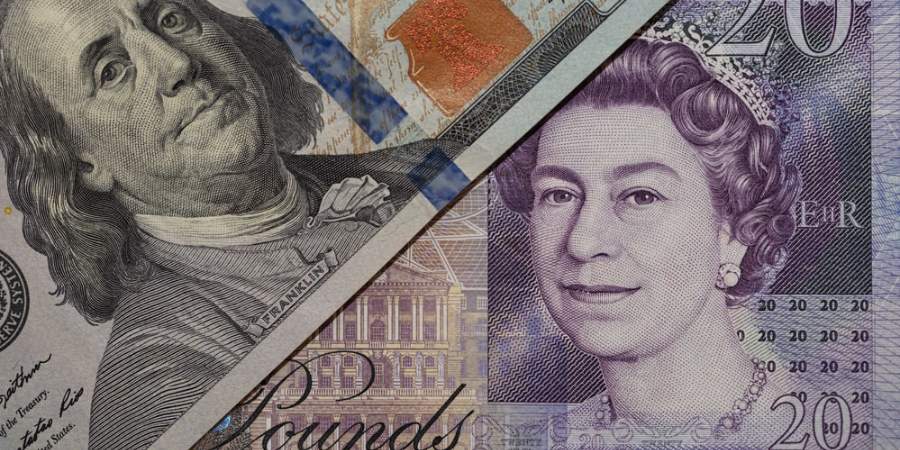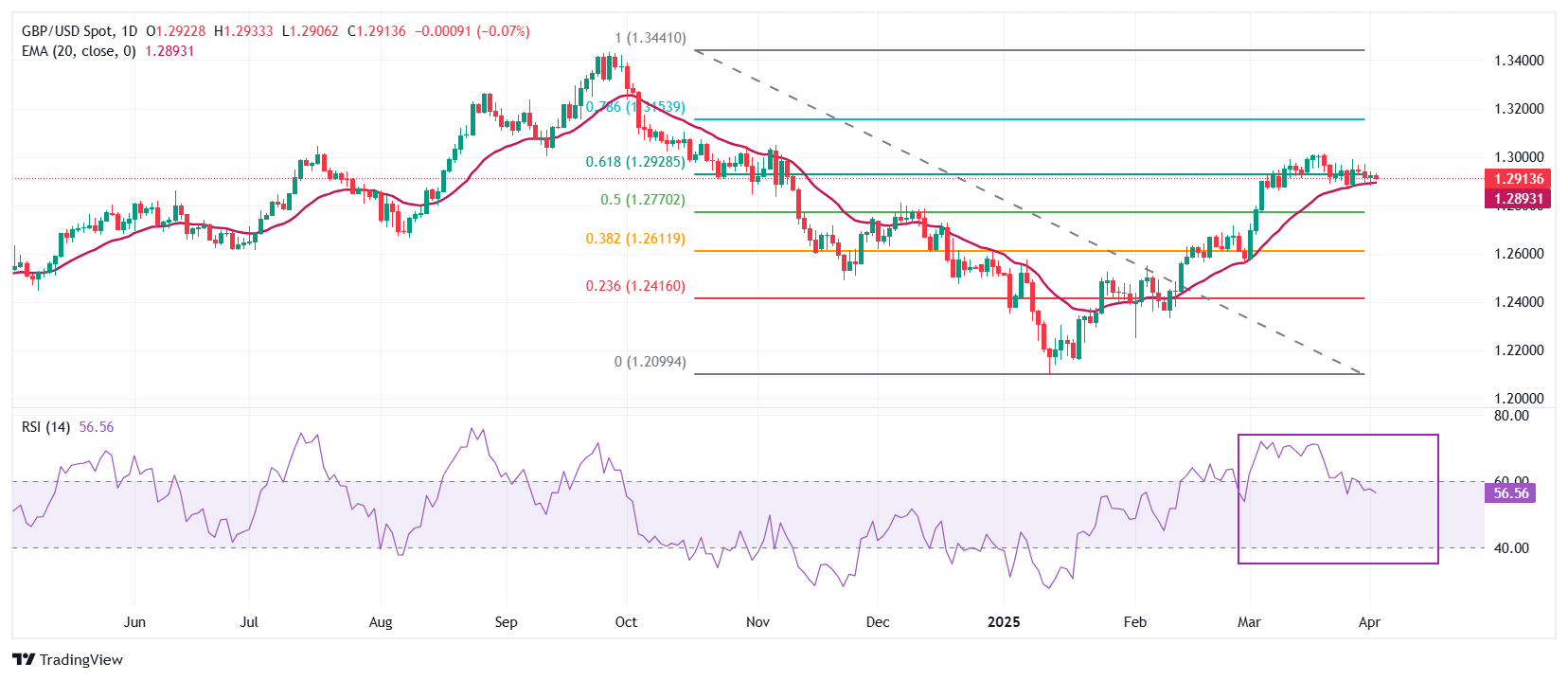Pound Sterling consolidates against US Dollar ahead of Trump’s tariffs announcement

The Pound Sterling trades in a tight range around 1.2900 against the US Dollar as US President Trump is scheduled to unveil the reciprocal tariff plan.
Trump’s tariff agenda is expected to address unfair practices by his trading partners.
Easing UK wage growth momentum could pave the way for more BoE interest rate cuts.
The Pound Sterling (GBP) trades sideways around 1.2900 against the US Dollar (USD) in Wednesday’s European session. The GBP/USD pair consolidates as investors have been sidelined, waiting for the release of a detailed reciprocal tariff plan by United States (US) President Donald Trump later in the day.
US President Trump has been touting April 2 as “Liberation Day” for weeks as he believes that the imposition of reciprocal tariffs will make “America great again”. Trump’s reciprocal tariffs are expected to upend the global trade system soon, as White House spokeswoman Karoline Leavitt signaled on Tuesday that fresh levies will become effective immediately after the announcement.
Market sentiment is expected to become excessively risk-averse if the degree of import duties comes in higher than expected. A note from the Washington Post on Tuesday showed that the White House aides have drafted a proposal to impose 20% tariffs on most imports to the US. Also, US Treasury Secretary Scott Bessent said on Tuesday that the President will sweep the highest possible levies on his major trading allies. Bessent suggested that tariffs on targeted countries could be diminished if they ease trade and non-trade barriers for imports from the US.
Donald Trump is expected to distribute the tariff collection to households through tax dividends or refunds. Such a scenario will be inflationary for the US economy, forcing the Federal Reserve (Fed) to maintain a restrictive monetary policy stance in the near term.
In Wednesday’s session, investors will also focus on the ADP Employment Change data for March, which will be released at 12:15 GMT. The agency is expected to show that private employers added 105K fresh workers, higher than the 77K addition recorded in February.
Daily digest market movers: Pound Sterling trades with caution on Trump tariff jitters
The Pound Sterling trades cautiously against its major peers on Wednesday. The British currency struggles as investors turn risk-averse ahead of Trump’s reciprocal tariff announcement. Market participants expect that Trump's new suite of levies will weigh on global economic growth, assuming that the imposition of higher duties by the US on its trading partners will make their products less competitive in the global market.
The United Kingdom (UK) economy will also bear the burden of uncertainty in the global market. The UK Office for Business Responsibility (OBR) warned on Monday that Trump’s policies could wipe out the government fiscal buffer and cut the economy’s size by as much as 1%.
Additionally, a delay in negotiations between the US and the UK over finalizing an economic deal beyond the “Liberation Day” has also stemmed concerns over the outlook of trade relations between them. There is a high chance that the terms and conditions of the potential economic deal could change after the reciprocal tariff announcement.
Meanwhile, cooling wage growth pressures are expected to uplift Bank of England (BoE) dovish bets. The Incomes Data Research (IDR) reported on Wednesday that the median pay rise grew by 3.5% in the three months to February, slower than the prior release of 4%. This was the lowest level seen in three years. It seems that employers refrain from awarding fat hikes to compensate for the increase in contributions to social security schemes. In the Autumn Statement, Chancellor of the Exchequer Rachel Reeves raised employers’ contribution to National Insurance (NI) from 13.8% to 15%.
Technical Analysis: Pound Sterling ranges against US Dollar around 1.2900

The Pound Sterling trades inside Tuesday’s trading range against the US Dollar on Wednesday. The GBP/USD pair continues to wobble around the 61.8% Fibonacci retracement, plotted from late-September high to mid-January low, near 1.2930. The 20-day Exponential Moving Average (EMA) provides support to the pair around 1.2890.
The 14-day Relative Strength Index (RSI) cools down to near 60.00 after turning overbought above 70.00. Should a fresh bullish momentum come into action if the RSI resumes the upside journey after holding above the 60.00 level
Looking down, the 50% Fibonacci retracement at 1.2770 and the 38.2% Fibonacci retracement at 1.2615 will act as key support zones for the pair. On the upside, the October 15 high of 1.3100 will act as a key resistance zone.
* The content presented above, whether from a third party or not, is considered as general advice only. This article should not be construed as containing investment advice, investment recommendations, an offer of or solicitation for any transactions in financial instruments.


